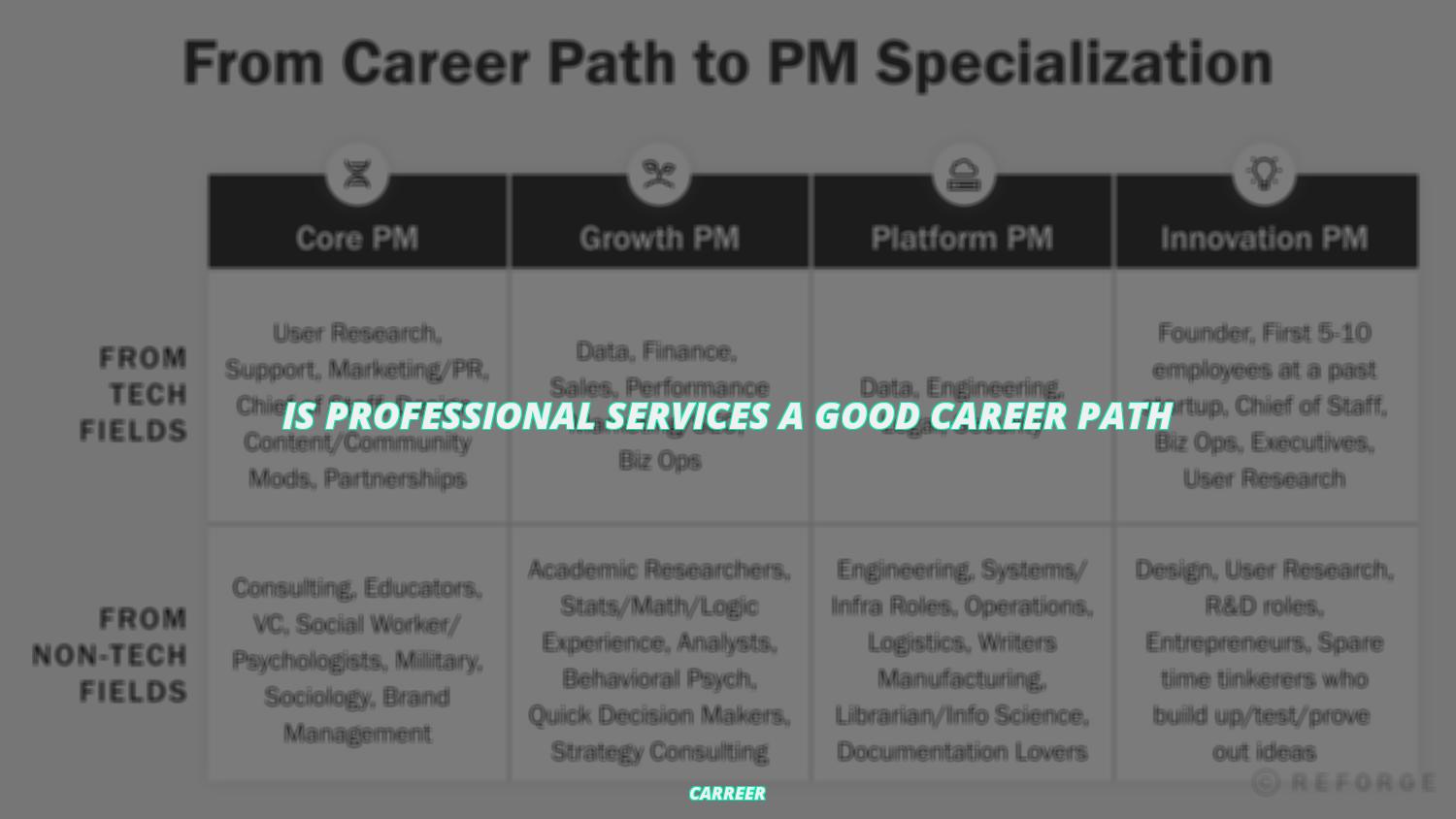Business
Is manufacturing a stressful job?

Manufacturing is one of the most physically demanding, repetitive and technically complex industries. It not only has the potential to be dangerous, but it can also be a highly stressful job. With large production quotas, tight deadlines and the possibility of working long hours, it’s no wonder that manufacturing employees often suffer from high levels of stress. Knowing what makes manufacturing employees stressed can help create a happier, healthier and safer workforce.
In this article, we’ll explore the 5 top causes of stress at work within manufacturing and how workplace training can reduce accidents and increase employee productivity. We’ll also take a look at the most and least stressful jobs within the manufacturing industry, as well as the happiest and unhappiest jobs and the job with the highest burnout rate.
Whether you’re a manufacturing employer looking to reduce stress in the workplace or a current or prospective employee of a manufacturing company, this article will help you better understand the stress levels associated with the manufacturing industry.
The 5 Top Causes of Stress at Work Within Manufacturing are: high demands, tight deadlines, long hours, physically taxing work, and technical complexity. High demands can be overwhelming and can cause feelings of stress and anxiety, especially if the quotas seem too hard to reach. Tight deadlines can be even more difficult if you’re working on a large project or trying to meet a deadline for a client. Long hours can be both mentally and physically exhausting, and can lead to burnout. Physically taxing work can also cause fatigue and stress, especially if it involves heavy lifting or dangerous machinery. Finally, technical complexity can cause confusion and frustration, especially if it’s something that’s new to the employee.
Fortunately, there are measures that employers can take to help reduce stress in the workplace. Workplace training in stress management is one of the most effective ways to help employees cope with stress and stay productive. This can include teaching employees how to recognize the signs of stress, how to manage their workloads, and how to practice healthy habits such as exercise and relaxation. Additionally, providing an open and supportive work environment where employees can voice their concerns can also be beneficial.
By taking proactive measures to help prevent and identify workplace stress, manufacturing companies can see a reduction in accidents and an increase in employee productivity. So if you’re in the manufacturing industry, keep reading our in depth article to learn more about the top causes of stress at work and how to reduce stress in the workplace.
Is manufacturing a stressful job?
Manufacturing can be an incredibly stressful job, with large production quotas, physically demanding labor, and oftentimes repetitive and monotonous work. Achieving the high demands of a manufacturing job can create feelings of stress and anxiety, which can have a negative effect on a business’s stress management and absence management. It is important for businesses to be aware of the top causes of stress in the manufacturing industry and to have proactive measures in place to help prevent and identify workplace stress.
High Demands : Manufacturing is a demanding job, with large production quotas that can often seem daunting. This does not relieve feelings of stress, and can even cause it. Workers can feel overwhelmed by the pressure to achieve high production standards, and if they feel they are not meeting these demands, it can lead to anxiety and depression.
Repetitive Work : Many manufacturing jobs involve repetitive and monotonous labor, which can be mentally draining and lead to a feeling of boredom. This can cause employees to feel unmotivated and lead to stress.
Noise : Manufacturing plants and warehouses can be incredibly noisy, which can cause stress and anxiety. Loud noises can make it difficult to concentrate and can even lead to hearing damage.
Unsafe Working Conditions : Unsafe working conditions can cause a feeling of fear among workers, leading to increased stress levels. This includes working with hazardous materials, long hours and inadequate breaks, and inadequate safety equipment.
How Workplace Training Can Reduce Accidents : By implementing proactive measures to help prevent and identify workplace stress, manufacturing companies can see a reduction in accidents and an increase in employee productivity. Workplace training in stress management is a great way of doing this. Stress management courses can help employees understand their stress triggers and develop coping strategies to help them manage stress. Additionally, making sure that employees are provided with adequate breaks and safety equipment can help to reduce stress and ensure that employees feel safe and secure.
In conclusion, stress in the manufacturing industry is an important issue that needs to be addressed in order to maintain a healthy and productive workforce. Knowing what may make manufacturing employees stressed can help a business’ stress management, making a happier, healthier and safer workforce, and could be a key part of absence management. With the right proactive measures in place, businesses can ensure that their employees are well-equipped to manage their stress and perform at their best.
What are the top 3 most stressful jobs?
No one likes to be stressed out at work, but for some, it’s an unavoidable part of their job. While there are many factors that make a job stressful, some occupations are just more taxing than others. In this blog, we’ll discuss the top three most stressful jobs in America and what makes each one so difficult.
First on the list is the military, which is perhaps the most difficult job in the world. Whether they’re in conflict zones or not, military personnel are subjected to intense physical and psychological stress. They are often required to work long hours, in dangerous and unpredictable conditions, and may be away from their family for extended periods of time. The stakes are often life and death, and the consequences of failure can be devastating.
Next is the job of first responder, which includes fire fighters, police officers, and paramedics. These individuals are tasked with keeping their communities safe and responding to emergency situations. They are frequently exposed to traumatic and dangerous situations, and must make life or death decisions in a matter of seconds.
Finally, the third most stressful job is that of an air traffic controller. Air traffic controllers are responsible for the safe and efficient operation of aircraft within an airspace. They have to stay alert and vigilant at all times, and must be able to make quick decisions in order to avoid potential disasters. They work in high-pressure environments, and are responsible for the safety of thousands of people every day.
These three jobs are undoubtedly the most stressful in the US, but other occupations can be equally as taxing. Jobs such as doctors, lawyers, and surgeons require intense focus, dedication, and precision. It is important to remember that any job can be stressful, but these three are particularly demanding.
No matter what job you have, it’s important to remember to take care of yourself. Stress can have a major impact on both your physical and mental health, so make sure to practice self-care and find ways to manage your stress levels. With the right strategies and support, you can tackle any job, even the most stressful ones.
No matter what job you have, it’s important to remember to take care of yourself. Stress can have a major impact on both your physical and mental health, so make sure to practice self-care and find ways to manage your stress levels.
Why do employees leave manufacturing jobs?
The manufacturing sector is an important part of the global economy, yet still, many employees in this sector choose to leave their jobs. This can be due to a variety of factors, from lack of purpose to lack of advancement opportunities. But is there a way to retain and develop top talent in the manufacturing sector?
Lack of Purpose. Everyone wants to feel proud of the work they do and feel like they’re contributing to something worthwhile, and that’s no different in the manufacturing sector. Employees often become disengaged when they feel their work isn’t making a difference. This can lead to a lack of motivation and, in turn, a lack of productivity.
Unclear Career Paths. Many employees in the manufacturing sector leave their jobs because of a lack of career progression opportunities. If the organization isn’t offering the chance for employees to develop and grow, then these employees may begin to feel stuck and may start to look for opportunities elsewhere.
Poor Workplace Culture. A bad workplace culture can be a major factor in driving employees away from their jobs. If the management team are unapproachable, or if there’s a lack of trust between employees and leaders, then employees may start to feel disillusioned and may choose to leave.
Low Wages. Low wages can be a major reason why employees choose to leave the manufacturing sector. If wages are too low, then employees may start to look for better-paying roles elsewhere.
Lack of Training and Development. Many employees in the manufacturing sector don’t have access to the training and development they need to meet their career goals. Without these opportunities, employees may start to feel as if their skills are stagnant and may start to look for jobs that offer more opportunities for growth.
By understanding the reasons why employees in the manufacturing sector choose to leave their jobs, employers can take steps to ensure that their employees are engaged and motivated. This includes providing employees with purposeful roles, offering clear career paths, creating a positive workplace culture, providing competitive salaries, and investing in training and development opportunities. In this way, employers can ensure that their top talent stays engaged and motivated, and that their organization is able to retain and develop its best employees.
What is the unhappiest job?
Most people have had a job that made them feel unhappy, but what is the unhappiest job in the world? According to CareerBliss’s 2018 unhappiest jobs report, the unhappiest job in the world is customer service associate. This is unsurprising, as customer service associates are often stuck dealing with unhappy customers and long hours.
Other jobs that made the list of the unhappiest jobs in the world include marketing coordinator, legal assistant and janitor. These jobs often involve dealing with difficult customers, tedious paperwork and long hours. Furthermore, these jobs don’t provide the same level of job satisfaction and fulfillment as other jobs.
In contrast, the happiest job in the world according to CareerBliss’s 2018 happiest jobs report is construction worker. Construction workers get to create something tangible and take pride in the work they do. Furthermore, they tend to have good relationships with their colleagues and the job satisfaction they gain from seeing their work come to fruition is unmatched.
So, why are construction workers so much happier than customer service associates or other unhappy jobs? A large part of it is that construction workers get to build something tangible, whereas customer service associates and other jobs on the unhappiest jobs list may not get to see the fruits of their labor. Furthermore, construction workers tend to have good relationships with their colleagues, whereas customer service associates and other unhappy jobs may not have the same level of camaraderie.
All in all, the unhappiest job in the world is customer service associate, according to the 2018 unhappiest jobs report by CareerBliss. However, the happiest job in the world is construction worker, as construction workers get to build something tangible and have great relationships with their colleagues. It’s important to remember that job satisfaction is subjective, so if you’re not happy in your current job, it may be time to find something else that will make you more fulfilled.
What is the #1 Happiest job?
It’s no secret that job satisfaction is an important factor in life. A happy job can make all the difference in terms of how productive and fulfilled you feel. But what is the #1 happiest job in the world? According to analysis conducted by the Guardian, engineers have the happiest job, closely followed by teachers and nurses.
These findings come from a survey of nine different studies that looked at occupations that make us happiest. Interestingly, there was no direct correlation between a high salary and job satisfaction. Gardeners, personal assistants, and construction workers also made the list.
So what makes a job a happy one? One firm conducted a huge study of over 30,000 employees and looked at jobs from different industries, from teachers to doctors to even janitors, to see who was the happiest. The answer may surprise you – construction workers!
What makes construction workers so content? It’s likely due to the feeling of accomplishment that comes with building something from the ground up. Plus, the job offers a sense of stability and security, especially for those who have been in the industry for a long time.
Construction workers also often feel a sense of camaraderie and community on the job site. It’s not uncommon for workers to become close friends, which can add to the overall happiness of the job.
The job also offers plenty of physical activity. Not only can this be good for your health, but it can also be mentally stimulating. Plus, construction workers often work outdoors, giving them the opportunity to appreciate nature and get some fresh air.
So there you have it – construction workers are the happiest employees in the world. Of course, everyone’s job satisfaction may vary depending on their individual circumstances. But if you’re looking for a job that offers a sense of accomplishment and camaraderie, then construction work may be the perfect fit for you.
What job has the highest burnout rate?
Burnout is an increasingly common phenomenon in the modern workplace, with employees feeling physically, mentally, and emotionally exhausted. While anyone can experience job burnout, some professions are more prone to burnout than others. According to an October 2012 USA Today article, workplace burnout is up across the board, partly due to economic conditions but largely related to the work environment and the nature of the work itself. In this article, we’ll take a look at some of the professions that have the highest burnout rate.
Social Workers
Social workers are at the frontlines of providing support and resources to those who need it most. Unfortunately, the high demand and long hours associated with this profession can lead to high rates of burnout. In fact, some research shows that roughly 75% of social workers experience burnout at least once during their career. In order to cope with the challenges of this profession, it is important for social workers to practice self-care and find ways to better manage stress.
Emergency Responders and First Responders
Emergency responders and first responders, such as firefighters, paramedics, and law enforcement officers, face some of the most intense and challenging job stress. Long hours, a disrupted circadian rhythm, and lack of sleep are the norm for these professions, leading to high rates of burnout. To combat this, emergency responders and first responders must prioritize self-care and find ways to manage their stress.
Nurses
Nursing is a demanding profession, and nurses are often required to work long hours and take on more than one job. This can lead to high levels of stress and burnout. In fact, research shows that around 60% of nurses experience burnout during their career. In order to cope with the demands of the profession, nurses need to find ways to manage their stress and practice self-care.
Teachers
Teachers are often undervalued and underpaid, working long hours and dealing with a lot of stress. Research shows that teachers experience high levels of burnout, with up to 80% of teachers experiencing burnout at least once in their career. To avoid burnout, teachers should prioritize self-care and find ways to manage their stress.
Burnout is a serious problem in the modern workplace, and it is important to be aware of the professions that are more prone to burnout. By understanding the challenges associated with these professions and taking steps to manage stress and practice self-care, we can help to reduce the risk of burnout.

Business
What is the highest position in operations?

Are you interested in finding out what the highest position in operations is? If so, you’ve come to the right place. The Chief Operating Officer (COO) is the highest-ranking executive position in an organization, forming part of the “C-suite”. The COO is typically the second-in-command at the firm, especially when the highest-ranking executive is the chairperson and CEO. But what is higher than a VP of operations? What are the four orders of operations? Who is higher, a GM or VP? What are the three levels of operations? And who is above the Director of Operations?
To answer these questions and more, let’s take an in-depth look at the hierarchy of operations jobs and the roles and responsibilities of each position. Starting with the highest position in operations, the COO is responsible for managing the daily operations of the company and ensuring that all departments are working together efficiently. They are also responsible for implementing the company’s long-term goals and strategies.
The second-in-command of operations is the Vice President of Operations. This position is responsible for developing and overseeing operational processes, such as budgeting, scheduling, and resource management. They also ensure that operational goals are met and provide guidance to operational teams. The General Manager is next in the order of operations and is responsible for managing the day-to-day operations of the business, including budgeting, staffing, and customer service.
Below the General Manager are the Directors of Operations, who are responsible for directing and coordinating the activities of the operational teams. Finally, there are the supervisors, who are responsible for overseeing the day-to-day activities of the operational teams. They are also responsible for ensuring that operational goals are met and providing feedback to their teams.
As you can see, there are many different levels of operations, each with their own unique responsibilities. Knowing the hierarchy of operations jobs can help you identify the right role for your skills and experience. It can also help you understand the roles and responsibilities of those in higher positions, such as the COO, VP of Operations, and General Manager. With this information in hand, you’ll be one step closer to finding the perfect job in operations.
What is the highest position in operations?
Operations management is a core function of any business, and the highest level of operations job is the chief operating officer (COO). The COO is typically the second-in-command to the company’s CEO and is responsible for overseeing the day-to-day operations of the business, including product development, customer service, and financial management.
The COO is typically tasked with ensuring that the organization meets its operational and financial goals. They may also be responsible for developing and implementing operational strategies, managing resources, and setting operational budgets. Additionally, the COO may be responsible for overseeing the performance of various teams and departments.
The COO typically reports to the CEO and works closely with other senior executives to ensure the organization’s success. They may also be responsible for making key decisions regarding the company’s direction and future. The COO is usually the highest-ranking operations position within the organization, and depending on the size of the organization, may also be responsible for managing other executives who oversee the various operational functions.
The COO is usually an experienced and highly-skilled executive with a strong understanding of business operations and strategies. They must have a proven track record of leading teams and departments, as well as making sound decisions that benefit the organization. It is also important that the COO have excellent communication and interpersonal skills.
At the next level down, there are typically executives responsible for individual functional areas such as finance, human resources, and sales. These executives are typically responsible for managing the day-to-day operations of their respective departments and ensuring that the organization is meeting its operational goals.
In addition to the COO and the executive management team, there are also mid-level managers responsible for overseeing the various operational functions within the organization. These managers typically report to the executive team and are responsible for managing the performance of their respective teams.
No matter the size of the organization, the highest position in operations is typically the COO. The COO is responsible for overseeing the organization’s day-to-day operations, managing resources, and setting operational budgets. They must have a strong understanding of business operations and strategies, as well as excellent communication and interpersonal skills. In addition, they must have a proven track record of leading teams and departments and making sound decisions that benefit the organization.
What is higher than VP of operations?
The Vice President of Operations (VP of operations) is a senior executive who is responsible for managing and overseeing the day-to-day operations of a company. The VP of operations is often the second-in-command at a company, and typically reports directly to the CEO or president. But is VP of operations higher than other executive positions?
The short answer is no, the VP of operations is typically not higher than other executive positions. The VP of operations is usually the same level of responsibility as the Chief Operating Officer (COO), and both typically report to the CEO or president. Other executive positions may have more power or responsibility than the VP of operations, such as the Chief Financial Officer (CFO) or the Chief Executive Officer (CEO).
Though the VP of operations and COO are typically seen as the same level of responsibility, there are some key differences between the two positions. For example, the VP of operations usually has more direct control over the day-to-day operations of the company, while the COO is often responsible for more of the strategic direction of the company. The VP of operations also typically reports to the president or CEO, while the COO typically reports to the CEO.
Additionally, the VP of operations usually has less career development opportunities than the COO. VPs of operations typically remain in their position until retirement, while some COOs may have the opportunity to move into the role of CEO. This is because the VP of operations is often focused on the day-to-day operations of the company, while the COO is typically responsible for more of the strategic direction of the company.
The VP of operations is an important role in any company, and can often be the difference between success and failure. However, it is important to note that there are other executive positions that may be higher than the VP of operations, and may have more power or responsibility. It is important to understand the differences between the VP of operations and other executive positions, as well as the career development opportunities associated with each position.
What are the 4 order of operations?
The order of operations is an essential concept in mathematics and a key step in solving mathematical equations. It’s also known as the “PEMDAS” rule, an acronym for Parentheses, Exponents, Multiplication & Division, and Addition & Subtraction. Understanding the order of operations is important to help you arrive at the right answer.
Parentheses: The first step in the order of operations is to evaluate any parentheses first. This means that any expression within parentheses must be evaluated before any other operation can take place.
Exponents: The next step is to evaluate any exponents. An exponent is the number of times the base number is multiplied by itself. For example, in the expression 23, the base number is 2 and the exponent is 3, so 23 is equal to 8.
Multiplication & Division: After evaluating any parentheses and exponents, the next step is to evaluate any multiplication and division in the expression. This must be done from left to right, so if both multiplication and division are present, start with the multiplication on the left and then move to the right and evaluate any division.
Addition & Subtraction: The last step in the order of operations is to evaluate any addition and subtraction. Again, this must be done from left to right.
It is important to remember the order of operations when solving equations. It is also important to use parentheses to group operations, so that equations are read in the way they are intended. For example, if you have an equation 3 + 4 x 5, the answer would be 35 if you evaluated the multiplication first, and 23 if you evaluated the addition first. By using parentheses, you can make sure the equation is read in the way you intend: (3 + 4) x 5 = 23.
The order of operations is a fundamental concept in mathematics and understanding it is the key to solving equations accurately. By following the 4 steps outlined above, you can make sure that your equations are evaluated in the correct order and that you arrive at the correct answer.
Who is higher GM or VP?
When it comes to the corporate hierarchy, the question of who is higher – a General Manager (GM) or a Vice President (VP) – can be a bit of a grey area. It’s important to understand the different roles and responsibilities of each position in order to determine who is higher.
General Managers are responsible for the day-to-day operations of a division of a company or stand-alone branch. They are responsible for budgeting resources for marketing, supplies, equipment, and hiring. Because of their high level of responsibility, complex duties, and the need for extensive relevant experience, GMs earn more than entry-level employees.
Vice Presidents are members of upper management, and typically have more authority than general managers. They often work with the general managers of divisions within the company to ensure that the overall goals and objectives of the company are being met. Vice presidents may also be involved in the decision-making process for higher-level matters, such as strategy, acquisitions, and personnel.
So, the answer to the question – Is GM higher than VP? – is no. Generally, a general manager will report to upper management, which in turn sets the GM’s goals and targets. Vice presidents, on the other hand, are members of upper management and typically have more authority than general managers.
That said, there are exceptions to this general rule. Depending on the company, the structure of the management hierarchy may differ, and a general manager may have more authority than a vice president. The key to determining who is higher in such cases is to look at the individual roles and responsibilities of each position.
It’s also important to note that, while the GM and VP roles may be distinct in terms of their responsibilities, they often work together in order to achieve the overall objectives of the company. GMs collaborate with higher-level managers and executives and with the employees that they supervise. Meanwhile, VPs work with the GMs of divisions within the company to ensure that the overall goals of the company are being met.
In conclusion, although companies can structure their management hierarchy in a variety of ways, a general manager is not higher than a VP. The individual roles and responsibilities of each position determine who is higher in any given situation.
What are the three levels of operations?
Operations management is the organization of the processes and resources of an organization. It encompasses the planning, organizing, leading, and controlling of the resources necessary for production and delivery of goods and services. It can be categorized into three specific levels: strategic/top level/longterm management, tactical/functional/medium term/middle level management, and operational/short-term management.
What is Strategic Management? Strategic management is high-level management of the organization. It generally encompasses long-term decisions. Different managers manage their enterprise at different level. Management is bound together in hierarchy of relationships. There are three levels of management in the hierarchy of an organization. These are:
Top Management
Top management consists of the senior-most executives of the organisation. They are responsible for making strategic decisions, such as setting the organisation’s overall mission and objectives. They are also responsible for setting the organisation’s overall budget, setting goals and policies, and making decisions on which markets to enter.
Middle Management
Middle management is responsible for carrying out the decisions made by the top management. They are responsible for the implementation of plans and policies. They are also responsible for the day-to-day operations of the organization, such as overseeing the activities of the staff, monitoring performance, and providing guidance and direction.
Operational Management
Operational management is responsible for the actual execution of the plans and policies. They are responsible for the day-to-day activities of the organization, such as production, scheduling, inventory control, quality control, customer service, and so on. They are also responsible for ensuring that the organization meets its goals and objectives.
The difference between the three levels of strategy in an organization is the level at which they operate in a business. The three levels are corporate level strategy, business level strategy, and functional level strategy. Corporate level strategy is concerned with the overall direction of the organization and is the highest level of strategy. Business level strategy is concerned with the individual businesses of the organization and is the middle level of strategy. Functional level strategy is concerned with the individual functions of the organization and is the lowest level of strategy.
By understanding the three levels of operations management, organizations can better plan and manage their operations. This can help them to better meet their goals and objectives, as well as to optimize their resources and processes. It can also help them to identify areas of improvement and to better understand their customers’ needs and wants. With the right strategy in place, organizations can improve their efficiency, productivity, and customer satisfaction.
Who is above Director of Operations?
When it comes to the corporate hierarchy, the director of operations typically reports to the chief executive officer (CEO). The director of operations is an executive-level position, working with senior-level management and C-suite positions.
What is an Operations Director? An operations director is a senior-level executive responsible for managing the day-to-day operations of a business or organization. This role oversees all operational activities, such as managing staff, ensuring compliance with regulations, and maintaining quality standards. Operations directors can be found in private, public, non-profit, or government sectors and job titles may differ depending on the industry.
An operations director is an executive who is in charge of managing the day-to-day operations of a company. This may include a wide range of tasks such as improving efficiency, setting budgets, and implementing employee policies. As an executive-level position, the director of operations is responsible for developing and executing strategies to maximize organizational efficiency and effectiveness.
What are the Responsibilities of an Operations Director? An operations director is responsible for managing the overall operations of a business or organization. This includes overseeing staff, ensuring compliance with regulations, and maintaining quality standards. They are also responsible for developing and implementing operational strategies to maximize organizational efficiency and effectiveness. Additionally, operations directors are responsible for monitoring financial performance and creating budgets.
What Qualifications are Needed to Become an Operations Director? To become an operations director, you should have a Bachelor’s degree in business administration, finance, or a related field. Previous experience in management or operations is also beneficial. Additionally, strong leadership, communication, and organizational skills are necessary for success in this role.
What is the Salary of an Operations Director? The average salary for an operations director is $90,000 per year. This can vary depending on experience, qualifications, and the size and industry of the organization.
In conclusion, the director of operations is a senior-level executive responsible for managing the day-to-day operations of a business or organization. They report to the chief executive officer (CEO) and are responsible for overseeing all operational activities, developing and implementing strategies to maximize organizational efficiency and effectiveness, and monitoring financial performance. To become an operations director, you should have a Bachelor’s degree in business administration, finance, or a related field, as well as previous experience in management or operations. The average salary for an operations director is $90,000 per year.
Business
Is professional services a good career path

Professional services is a broad and ever-growing industry that encompasses a range of different disciplines and specializations. It is an industry where creativity, hard work and enthusiasm are rewarded in terms of job prospects and career advancement opportunities. Professional services firms provide a wide range of services such as consulting, accounting, legal advice, financial services, engineering and IT services. This makes them attractive employers relative to many other sectors of the economy where layoffs or downsizing are common occurrences.
The demand for professional services is increasing, and so is the competition. With more and more people wishing to pursue a career in this field, it’s important to understand what it takes to be successful. In order to succeed in the professional services industry, you must have a combination of skills and expertise. These include analytical, communication and problem-solving skills, as well as the ability to develop relationships and be detail-oriented. You also need to have a strong work ethic and be willing to put in long hours.
The Big Four professional services firms – Deloitte, Ernst & Young, KPMG and PwC – are the leaders in the industry. They offer a wide range of services to their clients and provide a strong foundation for career growth. Other industries that fall under the professional services umbrella include engineering, healthcare, architecture and IT services.
To determine if professional services is a good career path in 2023, it’s important to consider the current job market. The demand for professional services has been growing steadily for the past few years, and this trend is expected to continue. As the economy continues to grow and more businesses begin to focus on their digital strategies, the demand for these specialized services will increase.
For those looking to pursue a career in professional services, the future looks bright. With the right skills and experience, you can make a successful career out of it. However, it is important to keep in mind that competition is high and only the best will succeed. To ensure success, having a strong work ethic, problem-solving skills, communication skills and the ability to develop relationships are essential.
Is professional services a good career path
If you’re looking for a career that offers a steady stream of opportunities, professional services may be the perfect fit. Professional and business services is a high-demand industry with plenty of opportunities for qualified job seekers. But is professional services a good career path in 2023?
To answer that question, it’s important to understand the unique advantages of a career in professional services. Professional services firms offer a wide variety of opportunities for job seekers. From accounting and consulting to legal services and human resources, professional services firms offer a diverse set of skills for those interested in a career in the industry.
In addition, the professional services industry is relatively recession-proof. This makes them attractive employers relative to many other sectors of the economy where layoffs or downsizing are common occurrences.
If you’re considering a career in professional services, there are certain skills you’ll need to be successful. In addition to technical skills related to the specific job you’re seeking, strong soft skills are also essential. Effective communication, teamwork, problem-solving, analytical skills, and proactive thinking are necessary to secure a job in professional service firms.
Another advantage of a career in professional services is the potential for career growth. The industry is constantly evolving, and those who are willing to stay ahead of the curve can find great opportunities for advancement. As firms expand and explore new markets, they often need people with the skills and ambition to take on new roles and responsibilities.
Finally, a career in professional services can be personally rewarding. Working with clients to solve their problems and help them reach their goals can be a fulfilling experience. Plus, the industry offers a wide range of salaries and benefits, making it an attractive option for job seekers.
So is professional services a good career path in 2023? The answer is yes. With the right skills and a willingness to stay ahead of the curve, job seekers can find plenty of opportunities for growth in the professional services industry. If you’re looking for a career with great potential, professional services may be the perfect fit.
What industries fall into professional services?
Professional services are occupations in the service sector that require special training in certain arts or sciences. Examples of professional services include architects, accountants, engineers, doctors, and lawyers, which all require practitioners to hold professional degrees or licenses and possess specific skills.
But what other industries fall into the professional services category?
Although professional services is a broad term, it encompasses many industries. Think of professional services as anything that a business owner may need to outsource in order to have more time to focus on their priorities and business operations.
Examples of occupations in professional services include project management, consulting, marketing, public relations, human resources, information technology, advertising, accounting, financial planning, legal services, engineering, and architecture.
In addition to these occupations, professional services can also include niche services such as search engine optimization (SEO), web design and development, digital marketing, social media management, and website maintenance.
In law, barristers typically organize themselves into chambers, and professional services are provided jointly by members of a chamber. This is also the case in other professions such as accountancy and engineering, where the professional service is provided jointly by a company, partnership, or limited liability partnership.
In some cases, a professional services firm may also offer other services such as tax advice, financial advice, and insurance services. This is particularly the case for accounting firms, which are often involved in providing a range of services to their clients.
When it comes to providing professional services, it is important to ensure that you are working with a professional who is qualified and experienced in their field. This is why it is important to conduct research and ask for references before engaging with a professional services firm or individual.
It is also important to ensure that you are aware of any potential conflicts of interest and that the services you receive are tailored to meet your specific needs. It is also important to ensure that the professional services you receive are compliant with any relevant laws or regulations.
In summary, professional services encompass a wide range of industries, from traditional occupations such as accountancy, engineering, and law to niche services such as SEO and web design. When engaging with a professional services firm or individual, it is important to ensure that they are qualified and experienced in their field and that their services are tailored to meet your specific needs.
What comes under professional services?
Professional services refer to a specific set of occupations that require special training in the arts or sciences. These services are typically provided by sole proprietors, partnerships or corporations, and the person providing the service can often be described as a consultant. Examples of professional services include accountants, lawyers, doctors, engineers, architects, and financial advisors.
Accountants are responsible for providing financial advice and managing the finances of their clients. They must possess a thorough knowledge of taxation laws, investment strategies and financial management procedures. Accountants must also have a strong understanding of accounting principles and be skilled in using accounting software.
Lawyers are responsible for providing legal advice to their clients. They must possess a thorough knowledge of the law and be skilled in both written and verbal communication. Lawyers typically specialize in a particular area of law and must be able to interpret and apply the law in a variety of contexts.
Doctors are responsible for providing medical care to their patients. They must possess a thorough knowledge of medical procedures, treatments and medications as well as a strong understanding of human anatomy and physiology. Doctors must also have excellent communication and interpersonal skills in order to effectively diagnose and treat their patients.
Engineers are responsible for designing and constructing a variety of structures and systems. They must possess a thorough knowledge of physics, mathematics and engineering principles as well as a strong understanding of the materials and techniques used in their field. Engineers must also be able to use a variety of software and technology to design, construct and test their projects.
Architects are responsible for designing buildings and other structures. They must possess a thorough knowledge of engineering principles, building codes and design techniques as well as a strong understanding of the materials and techniques used in their field. Architects must also be able to use a variety of software and technology to design and construct their projects.
Financial advisors are responsible for providing financial advice and guidance to their clients. They must possess a thorough knowledge of financial markets, investment strategies and taxation laws. Financial advisors must also be skilled in using financial software and have excellent communication and interpersonal skills in order to effectively advise their clients.
Professional services are often provided on a consultancy basis by independent contractors. These individuals must possess a thorough knowledge of their field as well as a strong understanding of the laws and regulations that govern their industry. Professional services are also frequently infrequent in nature, and the expertise required to provide them is attained only after rigorous training and certification.
In conclusion, professional services refer to a specific set of occupations that require special training in the arts or sciences. These services can be provided by sole proprietors, partnerships or corporations, and the person providing the service can often be described as a consultant. Examples of professional services include accountants, lawyers, doctors, engineers, architects, and financial advisors.
What is the future of professional services?
The future of professional services is an ever-evolving landscape, with technology and new ways of organizing and delivering services continuing to challenge the traditional ways that professionals have traditionally operated. Richard Susskind, one of the leading authorities on the “future of professional services”, has even said that technology will eventually displace traditional professional services, leading to the dismantling of the professions.
This disruption is already underway in the form of digital talent platforms, which are set to revolutionize business and benefit up to 540 million individuals by 2025, according to a recent study from McKinsey. These platforms are offering opportunities for businesses to access the skills of professionals from all over the world, creating a global workforce that can be accessed and utilized on demand.
At the same time, the very nature of the “practical expertise” that professionals deliver is being challenged. Services such as legal advice, engineering design, and financial advice are increasingly being automated, with advances in artificial intelligence and machine learning making it possible for businesses to access these services without the need for a traditional professional.
These changes are likely to have a significant impact on the professional services sector, with some predicting that the traditional roles of professionals will be replaced by technology-enabled services. This could lead to a shift in the balance of power between businesses and professionals, as businesses take advantage of new technologies to more efficiently access the services of professionals.
At the same time, there are also opportunities for professionals to leverage technology to improve their services and increase their value to their customers. For example, professionals can use analytics and data to provide more personalized and tailored services to their clients, as well as using automation to improve their efficiency and effectiveness.
Ultimately, the future of professional services is uncertain, and it is likely that the sector will continue to evolve and change as technology develops. However, businesses should take steps to ensure they are prepared for this disruption and make the most of the opportunities that technology can offer. For example, by joining Consultants 500, a niche job board with a 100% professional services focus, businesses can access the best talent in the sector and ensure they are well placed to take advantage of the new services and technologies that are revolutionizing the way professional services are delivered.
What are the Big Four professional services?
The Big Four professional services firms – Deloitte, EY, KPMG, and PwC – are the largest and most influential networks in the world. While they may be well-known to many, they deserve a closer look. What do they do? How do you get a job there? What is it like to work for them? What sets them apart from McKinsey, BCG, and Bain?
These firms offer a wide range of services, from auditing and accounting, to advisory and consulting, to tax, risk and legal advice. All of the Big Four firms have their roots in the accounting industry, and are often referred to as “Big 4 accounting firms”.
Auditing and Accounting
Auditing and accounting services are primarily focused on financial reporting, and involve assessing the accuracy of a company’s financial statements. This is a critical task for any business, as it helps ensure that the company’s financial information is reliable and up-to-date. The Big Four firms provide a range of auditing and accounting services to organizations, including assurance services, financial statement preparation, and business consulting.
Advisory and Consulting
The Big Four also offer a range of advisory and consulting services to help organizations optimize their operations and strategies. These services include strategy and operations consulting, which focuses on helping organizations identify and address the most pressing challenges they face. They also provide IT consulting, which helps organizations better understand their technology needs and develop solutions that meet those needs.
Tax, Risk and Legal Advice
The Big Four firms also provide tax, risk and legal advice to organizations. This includes helping organizations understand their tax obligations and develop strategies to reduce their tax burden. They also provide risk management advice, helping organizations identify and manage risks associated with their operations. Finally, they offer legal advice to organizations, helping them understand the legal implications of their business decisions.
A Career at The Big Four
Working at one of the Big Four firms can be an incredibly rewarding experience. The firms offer a wide range of opportunities and provide employees with unparalleled access to resources and training. Employees are also given the opportunity to work on some of the most interesting and complex projects in the world.
For those looking to join one of the Big Four firms, there is a rigorous recruitment process. Applicants must have a strong academic background, excellent communication and interpersonal skills, and the ability to think strategically. The firms also look for applicants who have the ability to work in a fast-paced and dynamic environment.
The Big Four firms are some of the most influential organizations in the world. They offer a range of services, including auditing and accounting, advisory and consulting, and tax, risk and legal advice. They also provide employees with a unique opportunity to work on some of the most challenging and rewarding projects in the world.
What is the most stable industry to work in?
Finding a job in a stable industry is key for those looking for security and long-term employment. Fortunately, there are many sectors that are growing and where workers tend to stay with the same employer for a long time.
To get a sense of overall job security for different industry sectors, the Bureau of Labor Statistics analyzed the median job tenure as of 2018 and the percent growth or decline in the number of people employed in each industry between March 2014 and March 2019.
The industries with the highest scores for job security were Information Technology, Healthcare, Financial Services, Energy and Utilities, and Manufacturing.
Information Technology is one of the fastest growing sectors, with employment increasing by 16.3 percent between 2014 and 2019. Those employed in the IT sector also tend to stay in their jobs longer than other industries, with a median job tenure of 5.2 years in 2018.
Healthcare is another sector that is growing rapidly, with employment increasing by 13.6 percent between 2014 and 2019. Healthcare workers also tend to stay in their jobs longer, with a median job tenure of 5.2 years in 2018.
Financial Services is a sector that is growing quickly, with employment increasing by 8.8 percent between 2014 and 2019. Financial Services workers also tend to stay in their jobs longer, with a median job tenure of 5.9 years in 2018.
Energy and Utilities is another sector that is growing quickly, with employment increasing by 8.4 percent between 2014 and 2019. Energy and Utilities workers also tend to stay in their jobs longer, with a median job tenure of 5.8 years in 2018.
Manufacturing is a sector that is growing slowly, with employment increasing by just 1.3 percent between 2014 and 2019. However, Manufacturing workers tend to stay in their jobs longer, with a median job tenure of 6.3 years in 2018.
Overall, industries that have high employment growth and where employees tend to stay in the industry for a longer period of time are likely to be better for those seeking job security. In particular, Information Technology, Healthcare, Financial Services, Energy and Utilities, and Manufacturing are some of the most stable industries to work in.
If you are looking for a job in a secure and stable industry, these five sectors are a great place to start. With high employment growth and long job tenures, these sectors are likely to provide the security and stability you are looking for.
To ensure you are getting the most out of your job search, it is important to research the different industries and employers before applying. For more information on job security in different industries, check out the Bureau of Labor Statistics’ latest data.
Business
What are the 3 levels of operations management?

Operations management is one of the most essential components of any organization. It helps to drive the company’s success by ensuring that all operations run smoothly and efficiently. It is important for an organization to have a clear understanding of the three levels of operations management in order to effectively manage its operations.
At the highest level of operations management is the top management, which consists of the senior-most executives of the organization. They are responsible for making long-term decisions and setting the overall direction of the organization. They also need to ensure that the organization is meeting its goals and objectives, and that it is taking steps to ensure its long-term success.
Middle management is the next level of operations management. This level includes the middle-level managers who are responsible for implementing the strategies set out by the top management. They also need to ensure that the daily operations of the organization are running smoothly and that any problems are addressed in a timely manner.
Finally, the third and lowest level of operations management is the operational or supervisory level. This level is responsible for the day-to-day operations of the organization. They are responsible for ensuring that the organization is running efficiently and that all tasks are completed on time. They are also responsible for ensuring that any issues are addressed quickly and effectively.
It is important for an organization to understand the three levels of operations management in order to ensure that all operations run smoothly and efficiently. By understanding the different levels, an organization can ensure that it is meeting its goals and objectives, and that it is taking steps to ensure its long-term success.
What are the 3 levels of operations management?
Operations management is an important element of business management, and it is essential to understand the various levels of operations management and their roles. The three levels of operations management are top, middle and operational.
Top Level Management consists of the senior-most executives of the organization. They are responsible for setting the overall goals and objectives of the organization and formulating strategies for achieving these goals. They are also responsible for setting the organization’s policies and procedures and developing the organization’s overall vision. Top level managers are responsible for the long-term decisions made by the organization, such as the overall direction of the organization, resource allocation and the implementation of new technologies.
Middle Level Management consists of managers who are responsible for managing and supervising the implementation of the strategies set by the top level management. They are responsible for the day-to-day operations of the organization and for ensuring that the organization is achieving its objectives. They are also responsible for managing the organization’s resources and personnel and for ensuring that all employees are properly motivated and trained.
Operational Level Management consists of employees who are responsible for carrying out the day-to-day operations of the organization. They are responsible for managing the organization’s resources, such as equipment, supplies and personnel, and for ensuring that the organization is meeting its operational objectives. They are also responsible for the implementation of new technologies and for ensuring that the organization is following the policies and procedures set by the top level management.
Operations management is an essential part of any business and understanding the different levels of operations management is essential in order to ensure that the organization is operating efficiently and effectively. The top level management is responsible for setting the overall direction of the organization, while the middle level management is responsible for the day-to-day operations and the operational level management is responsible for carrying out the operations of the organization. By understanding the roles and responsibilities of each of the levels of operations management, organizations can be better equipped to meet their goals and objectives.
What are the 3 core functions of an organization?
Organizations exist for the purpose of achieving a defined outcome, and these outcomes are typically measured by units of success. To reach these goals, organizations must employ core business functions. These are the main activities of a company and are integral to the success of the organization.
The three major functional areas of operations all rely on each other, and organizations must ensure that all of these areas are working together in order to be successful. The three major functions are strategic planning, operations management, and marketing.
Strategic Planning is the process of setting an organization’s long-term goals and objectives. It involves researching the market and analyzing the organization’s capabilities and resources in order to determine what direction the company should take. Strategic planning also includes analyzing risks and opportunities, as well as creating a plan to reach the desired goals.
Operations Management is the process of planning, organizing, and controlling the production of goods or services. It involves ensuring that the organization’s resources are used efficiently and effectively. This includes managing the supply chain, production, and distribution of goods or services.
Marketing is the process of promoting and selling products or services. It involves researching customer needs and wants, designing a product or service to meet those needs, and then advertising and promoting it in order to increase sales.
These three core functions of an organization must all work together in order to achieve success. Strategic planning informs operations management, which in turn informs marketing. Operations management must be able to provide the necessary resources for marketing to be successful. Finally, marketing must be able to generate enough sales to support the operations management and strategic planning of the organization.
Organizations that have a well-defined strategy, efficient operations management, and effective marketing will be more likely to succeed. By understanding and utilizing the three core functions of an organization, organizations can maximize their value and reach their desired goals.
What are the 3 important qualities in an operation role?
Operations roles require a diverse set of skills and qualities in order to be successful. In order to lead an operations team effectively, an individual must possess a unique combination of qualities, including strong motivational and decision-making skills, as well as the ability to think strategically and creatively.
Motivational Skills: Motivational skills are essential for any successful operations role. An effective leader needs to be able to inspire, motivate and engage their team members in order to reach their goals. This requires the ability to communicate effectively, to recognize individual strengths and to foster collaboration. A leader must also be able to build trust, create a positive working environment, and recognize and reward individual performance.
Decision-Making Skills: Decision-making is an important part of any operations role. A successful leader needs to be able to make quick, informed decisions in a variety of situations. They need to be able to assess risk, analyze data, and develop solutions to problems. They also need to be able to communicate their decisions clearly and effectively to the rest of their team.
Strategic Thinking: A successful operations leader needs to be able to think strategically. This involves analyzing data and trends, anticipating future needs, and developing plans to meet those needs. Strategic thinking also requires the ability to analyze the current market and develop strategies to stay ahead of the competition.
These three qualities are essential for any successful operations leader. Without them, it is difficult to ensure that the team is able to reach its goals. In order to be successful in an operations role, an individual must possess a unique combination of qualities, including strong motivational and decision-making skills, as well as the ability to think strategically and creatively.
What are the 3 basics of the organizational structure?
Organizational structure is an essential element of any organization, as it outlines the chain of command and workflow, as well as how information flows between the different levels of the company. It is also the basis for decision-making and communication within the organization, which is why it is important to understand the basics. The three basics of organizational structure are work design, departmentalization, and hierarchy.
Work Design: The work design outlines the roles, responsibilities, and tasks of each job within the organization. It is based on the skills and experience of each employee, and ensures that the right person is in the right job, and that each employee is able to perform to the best of their abilities. It also helps to create a sense of team spirit, as everyone knows that their role is integral to the success of the organization.
Departmentalization: Once the work design has been established, the next step is to group together similar tasks and roles, and to create departments. This is known as departmentalization, and it helps to ensure that tasks are completed efficiently and effectively. It also allows for better communication and collaboration between different departments, which is essential for the smooth running of any organization.
Hierarchy: The hierarchy is the system of ranking within the organization, and it is based on the roles and responsibilities of each employee. This helps to create a sense of accountability, as each employee knows where they stand in the company and who they are responsible to. It also helps to create a sense of order, as those with the highest rank have the authority to make decisions and give directions to those below them.
These three basics of organizational structure are essential for any organization to run smoothly and efficiently. They help to create a chain of command, to ensure that tasks are completed efficiently, and to create a sense of accountability and order within the organization. Understanding these basics is key to creating a successful organizational structure.
What are 3 organizational strategies?
Organizational strategies are essential for any business, as they provide a framework for the direction of the organization, and are used to identify and achieve the business goals. There are three main levels of organizational strategies: corporate level, business level, and functional level.
Corporate Level Strategy is the highest level of strategy, and is used to set overall business goals and objectives. The main purpose of this strategy is to ensure that the organization is heading in the right direction and is focused on achieving its goals. It also involves making decisions regarding the direction of the organization, the allocation of resources, and the overall strategy for the business.
Business Level Strategy is the second level of strategy and is used to ensure that the organization is achieving its corporate level goals. It involves making decisions regarding the organization’s activities, such as marketing, sales, production, finance, and infrastructure. Business level strategies also involve setting goals for each of these activities and ensuring that they are met.
Functional Level Strategy is the third level of strategy and is used to ensure that the organization is achieving its business level goals. This includes making decisions regarding the use of resources and capabilities to support business activities. This includes decisions regarding the use of capital, labor, and inventory. Functional level strategies also involve setting goals for each of these activities and ensuring that they are met.
Organizational strategies are important for any business, as they provide a framework for the direction of the organization, and are used to identify and achieve the business goals. By having a clear and well-defined organizational strategy, businesses can ensure that they are heading in the right direction and are focused on achieving their goals. Additionally, having an organizational strategy in place can help businesses to make more informed decisions and better utilize their resources, leading to increased efficiency and effectiveness.
What are the 3 organizational theories?
Organizational theory is an important field of study that helps us to understand how organizations interact with their environment and how their internal elements interact with each other. It is a broad field that encompasses various theories, each with their own unique approaches and perspectives. Here, we will explore the three most widely accepted organizational theories: Weber’s ideal of bureaucracy, modernization theory, and the Hawthorne study and contingency theory.
Weber’s Ideal of Bureaucracy is a theory developed by German sociologist Max Weber in the early 20th century. He argued that organizations can be well managed when they are structured in a hierarchical manner and when they are based on a set of rules and regulations. He also argued that organizations should be characterized by a clear division of labor and formalized lines of authority. This theory has been widely adopted by many organizations, as it provides a clear understanding of how an organization should be structured and managed.
Modernization Theory is a theory developed by American sociologist Talcott Parsons in the 1940s. It seeks to explain how organizations can adapt to changing environments and how they can remain competitive. This theory states that organizations should be able to use their resources efficiently and effectively in order to remain competitive. It also suggests that organizations should be aware of their external environment and be flexible in order to remain competitive.
The Hawthorne Study and Contingency Theory is a theory developed by American sociologist Elton Mayo in the 1930s. It suggests that organizations should be aware of their internal environment and be prepared to make changes in order to remain competitive. This theory also suggests that organizations should be aware of the external environment and be able to adapt to changing conditions in order to remain competitive.
Organizational theory is an important field of study that helps us to understand how organizations interact with their environment and how their internal elements interact with each other. It is important to understand the three main organizational theories, as they are widely accepted and provide a valuable insight into how organizations should be managed and structured. By understanding the theories of Weber, Parsons and Mayo, organizations can remain competitive and efficient by adapting to their environment and making changes when necessary.
-

 Career3 years ago
Career3 years agoWhat is the lowest salary for a pharmacist?
-

 Small Business6 months ago
Small Business6 months agoWhat Are the Costs Involved in Registering a Trademark and Key Factors to Consider
-

 Career3 years ago
Career3 years agoCustomer success manager career path
-

 Career3 years ago
Career3 years agoWhat is the highest paying customer service?
-

 Career Path3 years ago
Career Path3 years agoIs oilfield services/equipment a good career path
-

 Customer Service3 years ago
Customer Service3 years agoWhat is the highest paid customer service job?
-

 Small Business6 months ago
Small Business6 months agoStreaming Music in Malls: Strategies to Enhance Shopper Experience and Boost Business Performance
-

 Customer Service3 years ago
Customer Service3 years agoOnsumer services a good career path



